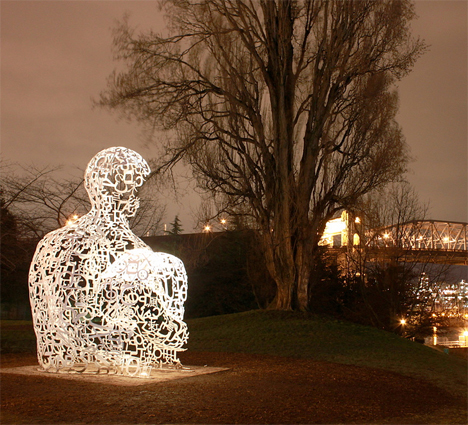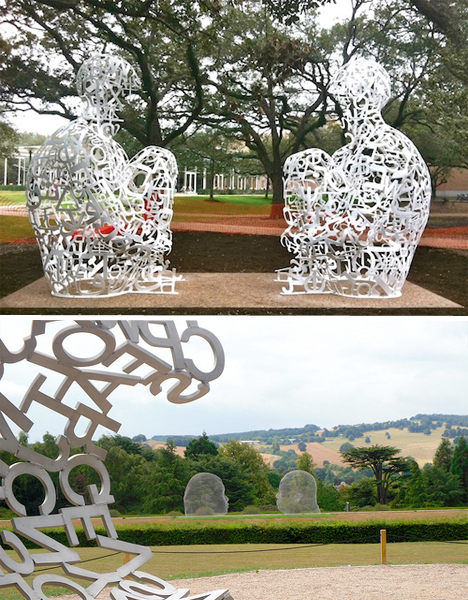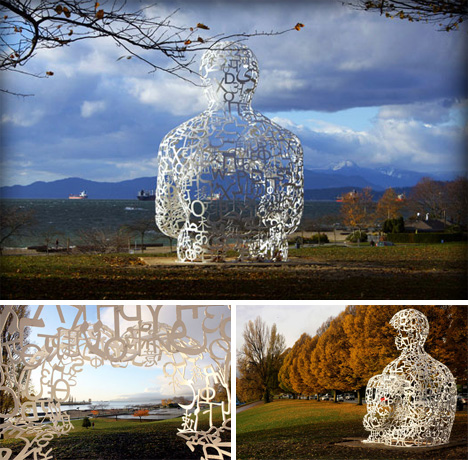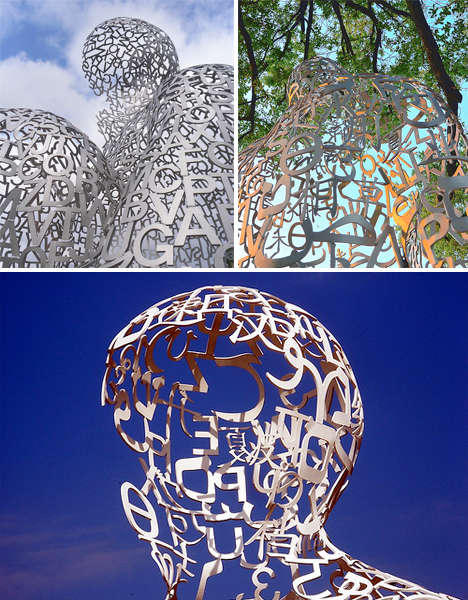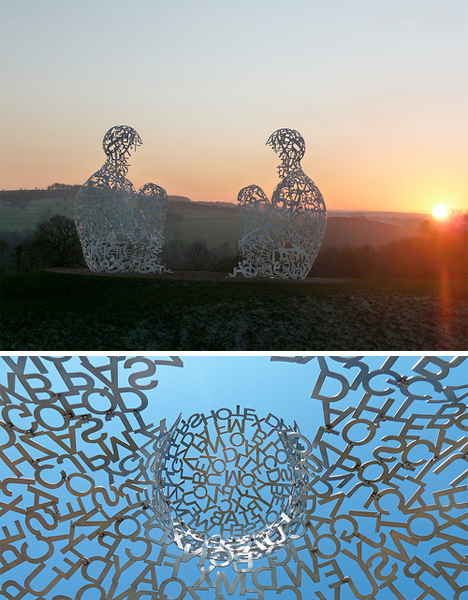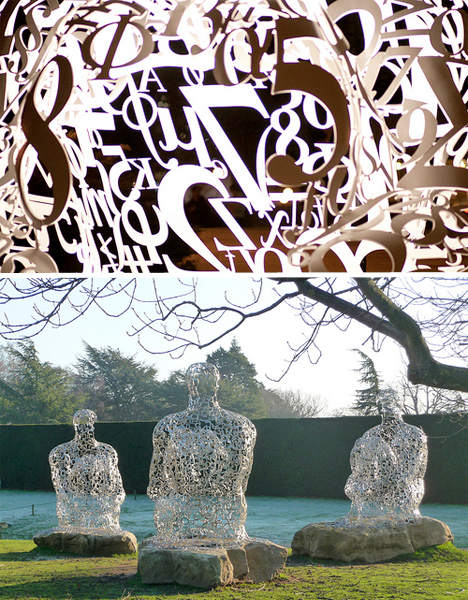Giant human figures made of jumbled steel letters loom over public spaces in a series of monumental typographic sculptures by artist Jaume Plensa. The contemplative seated figures seem to watch over the landscapes and city squares where they have been installed around the world, from London to Rio de Janeiro.
(images via: chris huggins, jaume plensa)
(images via: terry madeley)
The text seems to wrap around invisible human forms, looking at times as if it is incomplete. Plensa’s work is not just thought-provoking, it is about thought itself and how words can shape our world and the way we interact with it.
(images via: terry madeley, jw sherman, anders sandberg)
Plensa has borrowed paragraphs from biblical texts, classic literature like Dante’s Divine Comedy, and poetry by William Blake. Stand beneath or inside one of these massive sculptures and you likely won’t be able to read much of the text – but that’s not the point.
(images via: tim green, lorraine 1 + 2, liza31337)
Conceptual dualities, like the play between negative and positive space, are intended to stimulate intellectual engagement, connecting the sculptures with the viewers on an intuitive level. The pieces often include ‘doorways’ so viewers can interact with the work, temporarily becoming a part of it.
